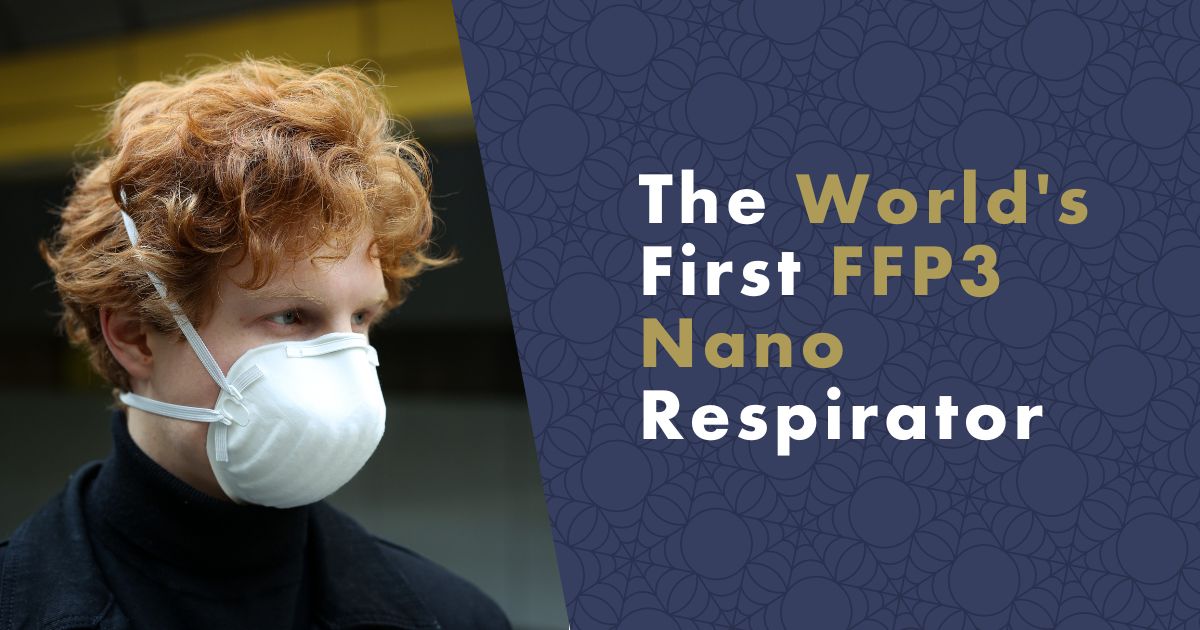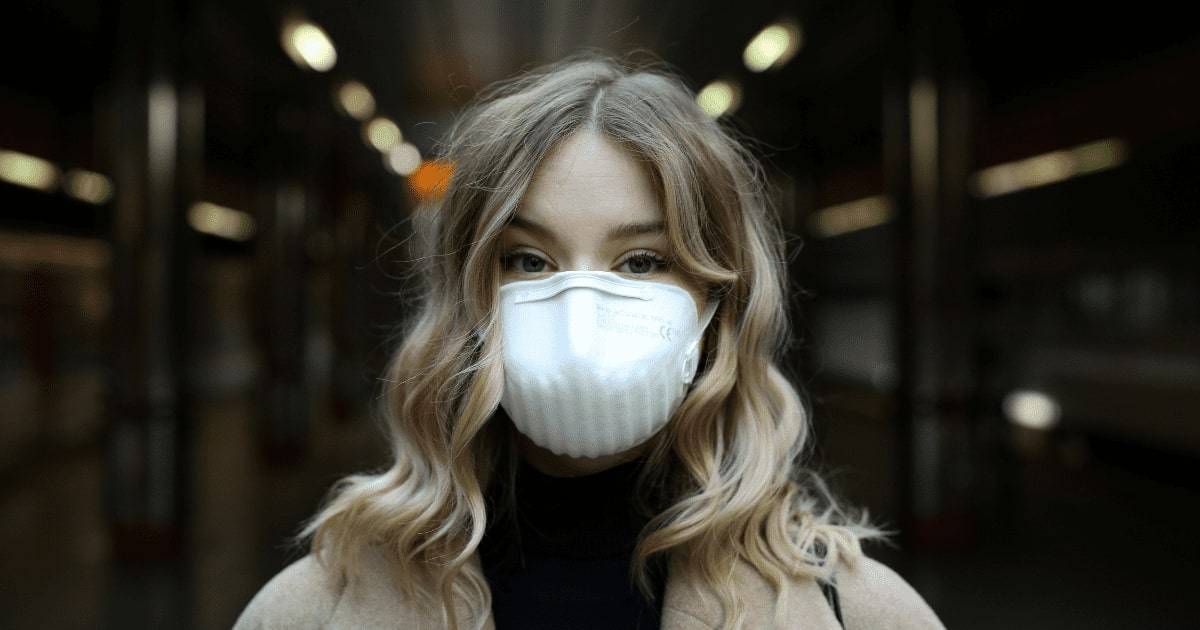The unique respirator BreaSAFE® Classic FFP3 with nanofibers brings several crucial advantages. It provides maximum protection, can be used for up to two weeks, and is comfortable and breathable. The company Pardam Nano4Fibers is now capable of producing up to 800,000 units of these respirators per month.
Tip: What is nanofiber? Read more here.

Pardam Nano4Fibers
The company Pardam Nano4Fibers from Roudnice nad Labem has been specializing in nanofiber production since 2009. Nanorespirators and nanomasks were more of a marginal assortment for them, but everything changed with the arrival of 2020. Last year, at this time, Pardam was producing approximately 5000 respirators per month. However, when demand increased in the spring of 2020, the demand for them quickly skyrocketed. The company therefore focused on increasing production capacity and obtaining FFP3 certification for one of the respirators they produce. And both were achieved in just one year!
"Since spring, we have been working on the full certification of a respirator that meets the parameters for the highest protection class, FFP3. I am pleased that after several months of development and testing, we have certified the first nanofiber respirator in the Czech Republic, which is also a global innovation,"
"We have significantly increased production capacity, streamlined production processes, and are currently able to produce up to 800 thousand units per month..."

Respirator BreaSAFE® CLASSIC FFP3 Can Be Safely Used for Up to 14 Days
FFP3 respirator BreaSAFE® CLASSIC is globally unique for two reasons. Firstly, it contains nanofiber produced by centrifugal spinning technology, giving it unique properties in capturing particles and microorganisms—captures at least 99% of them. Secondly, it is exceptionally breathable, and therefore, unlike other FFP3 respirators, it does not need an exhalation valve. This not only protects the wearer but also the surroundings. The nanomembrane also increases the respirator's resistance to moisture.
In practice, this means that with proper care and regular disinfection, it can be used for protection against viruses and bacteria for several days or weeks. Internal tests by Pardam have shown that even a respirator sterilized 14 times functions without a decrease in effectiveness. The respirator is also financially advantageous, priced at 8 USD (7 EUR) per piece, but given the possibility of reuse, this investment pays off.
Tested Particle Capture for Virus-Sized Particles
Respirator BreaSAFE® is made of 3 to 4 functional layers laminated without the use of any additives such as adhesives or binders; this manufacturing method is environmentally friendly. Due to this, the respirator is lightweight, anatomically shaped to a flexible shell, and hypoallergenic.
#produkty#https://www.nanospace.store/ffp3-nano-respirators:pardam/?order=bestseller
Both respirators reliably protect against particles the size of viruses. The nanofiber membrane from Pardam Nano4Fibers has tested particle capture in the size range of 100-300 nanometers. Viruses move in the size range of 20 to 400 nanometers, but the droplets on which they are transmitted are realistically much larger. The nanofiber membrane is capable of capturing smaller particles well, thanks to atomic forces that attract smaller particles to each other.
In addition to BreaSAFE® respirators, Pardam Nano4Fibers also produces FFP2 respirators with nanofibers in various color options.
#produkty#https://www.nanospace.store/ffp2-nano-respirators:pardam/?order=bestseller
Sources
- Ullah, S., Ullah, A., Lee, J., Jeong, Y., Hashmi, M., Zhu, C., Joo, K.I., Cha, H.J. and Kim, I.S., 2020. Reusability comparison of melt-blown vs nanofiber face mask filters for use in the coronavirus pandemic. ACS Applied nano materials, 3(7), pp.7231-7241.
- Damokhi, A., Yousefinejad, S., Fakherpour, A. and Jahangiri, M., 2022. Improvement of performance and function in respiratory protection equipment using nanomaterials. Journal of Nanoparticle Research, 24(4), p.76.
- Suen, L.K.P., Guo, Y.P., Ho, S.S., Au-Yeung, C.H. and Lam, S.C., 2020. Comparing mask fit and usability of traditional and nanofibre N95 filtering facepiece respirators before and after nursing procedures. Journal of Hospital Infection, 104(3), pp.336-343.
- Skaria, S.D. and Smaldone, G.C., 2014. Respiratory source control using surgical masks with nanofiber media. Annals of occupational hygiene, 58(6), pp.771-781.
- Abbasinia, M., Karimie, S., Haghighat, M. and Mohammadfam, I., 2018. Application of nanomaterials in personal respiratory protection equipment: a literature review. Safety, 4(4), p.47.
- Tcharkhtchi, A., Abbasnezhad, N., Seydani, M.Z., Zirak, N., Farzaneh, S. and Shirinbayan, M., 2021. An overview of filtration efficiency through the masks: Mechanisms of the aerosols penetration. Bioactive materials, 6(1), pp.106-122.
- Akduman, C. and Akcakoca Kumbasar, E.P., 2018, December. Nanofibers in face masks and respirators to provide better protection. In IOP conference series: Materials science and engineering (Vol. 460, p. 012013). IOP Publishing.
- Naragund, V.S. and Panda, P.K., 2022. Electrospun nanofiber-based respiratory face masks—A review. Emergent materials, 5(2), pp.261-278.
- Zhang, Z., Ji, D., He, H. and Ramakrishna, S., 2021. Electrospun ultrafine fibers for advanced face masks. Materials Science and Engineering: R: Reports, 143, p.100594.
- Seidi, F., Deng, C., Zhong, Y., Liu, Y., Huang, Y., Li, C. and Xiao, H., 2021. Functionalized masks: powerful materials against COVID‐19 and future pandemics. Small, 17(42), p.2102453.

